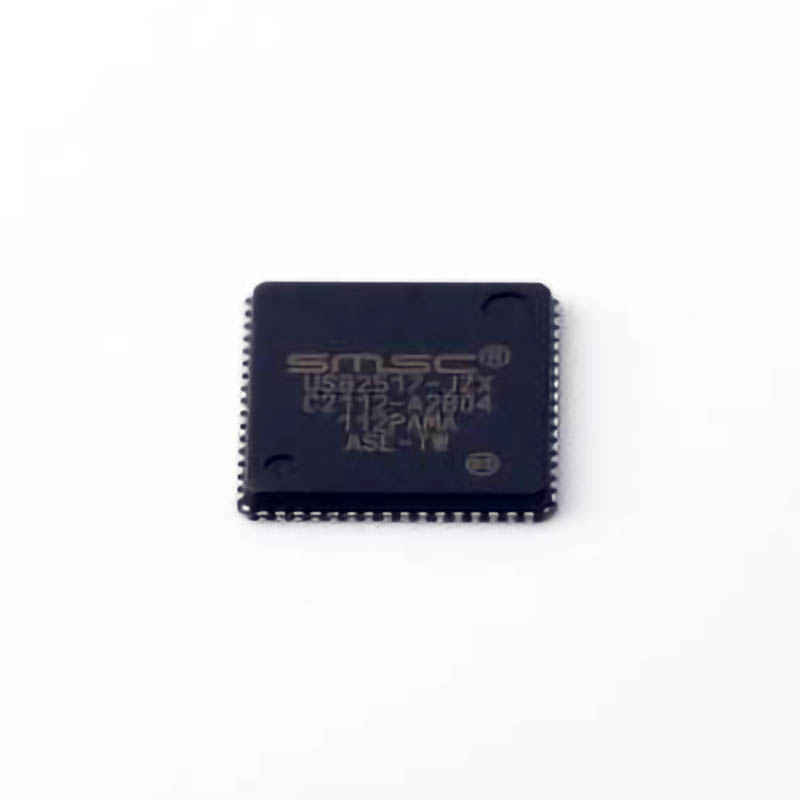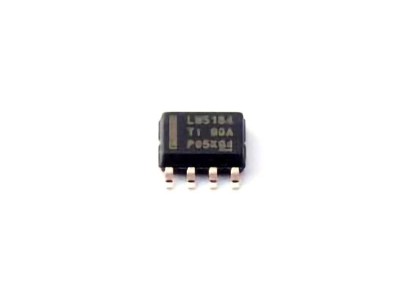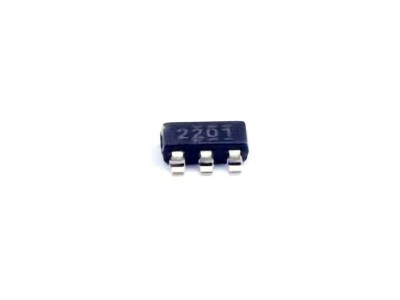
This article delves into the most common troubleshooting issues faced when working with the USB2517-JZX , a versatile USB hub controller. It provides detailed solutions to help users resolve problems efficiently and optimize device performance.
USB2517-JZX, USB hub controller, troubleshooting, common issues, USB device, Power issues, firmware update, USB signal integrity, troubleshooting solutions, USB performance, USB compatibility
The USB2517-JZX is a popular USB 2.0 hub controller designed to deliver high performance in USB connectivity, offering users a cost-effective solution to add USB ports to a device. It integrates smoothly with embedded systems, computer peripherals, and consumer electronics. However, like any electronic component, users occasionally face challenges. Whether you’re an engineer integrating this hub into your design or a technician troubleshooting an issue, understanding the common problems and knowing how to address them can save a lot of time and frustration.
1. Power and Connectivity Issues
One of the most frequent problems users encounter with the USB2517-JZX is power-related issues. The hub may fail to power up or intermittently disconnect USB devices, leading to communication disruptions or failures. This issue typically arises due to either insufficient power supply or poor power distribution within the system.
Solution:
First, ensure that the power supply connected to the USB2517-JZX meets the required voltage and current specifications. The hub requires a stable 3.3V or 5V power supply, depending on the specific design. If you're using a USB-powered design, ensure that the host device provides enough current to power all connected devices. Insufficient power may cause the hub to disconnect or fail to operate correctly.
Additionally, check for possible ground loop issues or poor power distribution in the PCB design. Poor grounding can cause erratic behavior, particularly when multiple USB devices are connected.
2. USB Device Detection Failures
Another common issue is when the USB2517-JZX fails to detect connected devices or doesn't enumerate them correctly. This can manifest as devices not showing up in the system or the operating system failing to recognize them.
Solution:
Check device compatibility: Ensure that the devices you are connecting to the hub comply with USB 2.0 standards. Some USB 3.0 devices, for instance, may have compatibility issues when connected to a USB 2.0 hub.
Firmware and drivers: Sometimes, outdated or incompatible firmware or drivers on the host device can prevent the USB2517-JZX from recognizing connected devices. Check for any firmware updates for the USB2517-JZX and ensure that the appropriate drivers are installed on the host system.
Reset the hub: Power cycle the USB hub by disconnecting it from power for a few seconds and reconnecting it. This can often resolve detection issues caused by temporary glitches.
3. Data Transfer Speed Problems
USB2517-JZX is designed to support USB 2.0 speeds, but users may sometimes experience reduced data transfer rates, especially when multiple devices are connected. This problem may arise due to bandwidth limitations, poor signal integrity, or inefficient firmware configurations.
Solution:
Verify USB bus load: Check how many devices are connected to the hub and their data transfer requirements. USB 2.0 bandwidth is limited to 480 Mbps, so connecting multiple high-speed devices simultaneously can lead to slower data rates.
Signal integrity: Ensure that the USB data lines are properly routed with minimal signal degradation. Long USB cables or poor PCB routing can cause noise and reduce the quality of the signal, impacting data transfer speed. Use differential pair routing for USB data lines and keep trace lengths as short as possible.
Firmware optimization: Some USB hubs, including the USB2517-JZX, have configurable firmware that can optimize data handling. Ensure that the firmware is updated to the latest version and check if there are any advanced settings that could help improve performance under heavy loads.
4. USB Port or Hub Overload
When too many devices are connected to the USB2517-JZX, you might experience an overload situation, especially if multiple power-hungry devices are attached. The hub might not supply enough current to each port, leading to failures in powering devices, frequent disconnects, or system instability.
Solution:
To prevent overload, check the power consumption requirements of each connected USB device. The USB2517-JZX can deliver a limited amount of current to each port, so you should avoid connecting power-hungry peripherals such as external hard drives or high-power USB accessories to a single hub. In such cases, consider using a powered USB hub that has its own external power supply to avoid overloading the bus power.
5. Electrical Noise and Interference
Electromagnetic interference ( EMI ) or electrical noise is a common problem that can affect the USB2517-JZX’s functionality. This can cause data corruption, unreliable connections, or intermittent device behavior.
Solution:
To minimize EMI, ensure that the PCB layout adheres to good design practices for USB signal routing. Use proper decoupling capacitor s close to the power pins of the USB2517-JZX and shield sensitive signal lines from noise sources. If external cables are used, make sure to use shielded cables and ferrite beads on the USB data lines to prevent noise interference.
6. Inconsistent USB Power Management
USB hubs like the USB2517-JZX come with integrated power management features to ensure optimal power distribution to connected devices. However, power management issues can sometimes occur, resulting in devices not receiving enough power or not being powered up correctly.
Solution:
Monitor power states: Some USB devices require a specific power state (such as Suspend, Resume, or Active) to operate correctly. Use a USB protocol analyzer or oscilloscope to monitor power state transitions and detect any irregularities.
USB suspend/resume behavior: If devices are not waking up or are repeatedly going into suspend mode, check the host’s USB controller power management settings. Certain configurations may cause the USB hub to enter low-power states too frequently.
Check the power role: The USB2517-JZX hub can act as either a downstream or upstream device, and it's important to verify that the correct power role is assigned. Some setups may require manual intervention to configure the power role correctly.
7. Inconsistent USB Port Behavior
Sometimes, individual USB ports on the USB2517-JZX may behave erratically, such as providing intermittent connections or failing to supply power properly to attached devices.
Solution:
Inspect for hardware faults: This could be due to a faulty USB port or a damaged connection. Check the physical integrity of the port on both the USB2517-JZX and the connected device. If there’s any sign of damage, replace the port or repair the connections.
Resoldering and cold solder joints: Cold or cracked solder joints on the PCB can lead to unreliable port behavior. Carefully inspect the PCB and resolder any suspect joints that might be affecting connectivity.
Swap ports for testing: If only one port is malfunctioning, try swapping cables or devices with another port to determine if the issue is related to the port itself or the connected device.
8. Firmware Corruption or Errors
In rare cases, firmware corruption or errors in the USB2517-JZX’s microcontroller may cause erratic behavior, such as random resets or device enumeration failures. Firmware corruption can occur due to power surges, improper firmware updates, or other issues.
Solution:
Reflash the firmware: Use the manufacturer's recommended tools to reflash the USB2517-JZX with the latest firmware version. Be sure to follow the proper procedures for firmware updates, as improper flashing can make the device inoperable.
Factory reset: If the device behaves unpredictably after a firmware update, perform a factory reset to return the device to its default settings.
Check for firmware compatibility: Make sure that the firmware version you are using is compatible with the hardware revision of the USB2517-JZX. Firmware mismatches can lead to instability.
9. Troubleshooting with USB Protocol Analyzer
When all else fails, using a USB protocol analyzer can be incredibly helpful in diagnosing complex issues. A USB protocol analyzer allows you to capture detailed traffic between the host and the USB2517-JZX, providing insight into what might be causing the problems.
Solution:
Use a USB protocol analyzer to capture data and check for irregularities, such as missed packets, incorrect handshake signals, or failed enumeration sequences. This tool can help identify if the problem is related to USB signaling, timing issues, or power management.
Conclusion
The USB2517-JZX is a powerful and reliable USB hub controller that can bring multiple USB ports to your devices with minimal hassle. However, as with any technology, occasional issues may arise. By understanding the most common problems — including power and connectivity issues, data transfer slowdowns, and USB device detection failures — you can take proactive steps to address them.
By performing regular firmware updates, optimizing hardware design, and using advanced troubleshooting techniques, users can ensure the USB2517-JZX continues to perform at its best. Whether you are an engineer, designer, or technician, resolving these issues quickly will help you maintain smooth operations and get the most out of your USB hub controller.
If you are looking for more information on commonly used Electronic Components Models or about Electronic Components Product Catalog datasheets, compile all purchasing and CAD information into one place.


